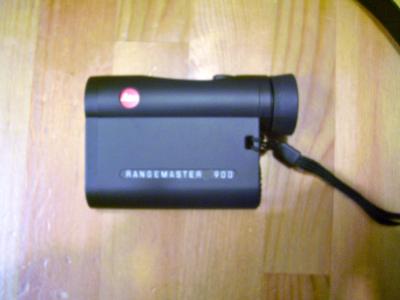Rangefinders
 A range finder is an instrument to accurately provide the distance between its user and a specific visible point and is used by law enforcement agencies, the armed forces, photographers and hunters among other users. Latest range finders use laser, radar/sonar and radio wave technology to measure angles, estimate distances and directions with great accuracy. In hunting, knowing the exact distance between a shooter and the intended target can be crucial. Despite any level of experience, training or skill, a hunter is prone to err in lining up a target at times. Among the many reasons responsible for an error that include target motion, stray debris, weather, miscalculating the target distance etc., wrongly estimating target distance accounts for the major part of target misses. A range finder is the proper solution to overcome this handicap.
A range finder is an instrument to accurately provide the distance between its user and a specific visible point and is used by law enforcement agencies, the armed forces, photographers and hunters among other users. Latest range finders use laser, radar/sonar and radio wave technology to measure angles, estimate distances and directions with great accuracy. In hunting, knowing the exact distance between a shooter and the intended target can be crucial. Despite any level of experience, training or skill, a hunter is prone to err in lining up a target at times. Among the many reasons responsible for an error that include target motion, stray debris, weather, miscalculating the target distance etc., wrongly estimating target distance accounts for the major part of target misses. A range finder is the proper solution to overcome this handicap.
Latest rangefinders for hunting purposes mostly use laser technology and are able to measure distances to a wide range of objects that include animals, trees, rocks formations etc. These rangefinders are usually referred to as LIDAR standing for Light Detection and Ranging. The rangefinder unit emits a narrow laser beam to hit the target and bounce back to the unit. It measures the time elapsed between sending out and receiving back the beam to calculate the distance to the target. Many modern rangefinders also function as hypsometers to take angle measurements to calculate the height of a target. Such a rangefinder will be able to measure line-of-sight-distance, height, angle and horizontal distance. Each measurement is taken with the rangefinder functioning in a particular mode. For measuring the line-of-sight distance using a typical unit of this type, the user has to look through the rangefinder and simultaneously keep a button on the unit pressed, which will make a red dot appear in the line of vision. This dot should be aimed at the target. A beep emitted by the unit a few seconds later will indicate that the measurement has been recorded and the red dot will disappear. The measurement can then be read on an external LED display.
ARC technology, as called by Bushnell is a great innovation for bowhunters as it is imperative to know the true ballistic range in order to make a precise kill shot.
A selection can be made for the measurement to appear in feet/yards/meters. Angle measurements can be taken by switching the unit into another mode and following the earlier procedure aim the red dot at the center of the target. A beep and disappearance of the dot will indicate recording of the measurement. Following this the process should be repeated twice, once aiming the red dot at the top of the target and then again at the foot of the target to record the angular distances. In the hypsometer mode the rangefinder will take into account all the three distance measurements and electronically calculate and display the height of the target in feet/yards/meters as desired. In yet another mode the horizontal distance to the target can also be measured regardless of target elevation. These rangefinders are compact, versatile and are battery operated.
There are many options in rangefinders available for hunting purposes that offer excellent results for distances between 5 to 1500 yards. A selection can be made from products made by many reputed manufacturers like Leupold, Bushnell, Nikon, Opti-Logic, Swaroski and Leica to name a few. A good rangefinder will ensure that every shot fired by a hunter is accurately placed. It will have a lightweight, rugged and sturdy construction to withstand handling and the vagaries of nature. It will provide optimum visual clarity and precision measurement using the latest available technology. It will function effectively and will be cheap in price relative to the advantages it offers.
Ballistics calculation is also of vital importance in hunting. Bullets fired at locations at differing altitudes and atmospheric conditions display differing trajectories. Air density differs dramatically with altitude and has a large effect on bullet trajectory. In bullet flight equations for calculating drag force on a bullet air density is a direct multiplier. Other factors for ballistic calculations include the relative humidity in the atmosphere and water vapor pressure at atmospheric temperature. All this means that a rifle sighted at a particular location will not provide a perfect shot at another location that is at a different altitude from where it was initially sighted.
Finding a solution to this problem has been simplified with the availability of sophisticated computer software. Loaded on to a computer, it analyzes and calculates all physical forces influencing the flight of a bullet without firing scores of test shots and spending hours in making manual ballistic calculations. It instantly provides accurate lead, drop and windage corrections for optimizing weapon settings greatly enhancing the ability to place a precise shot every time.

